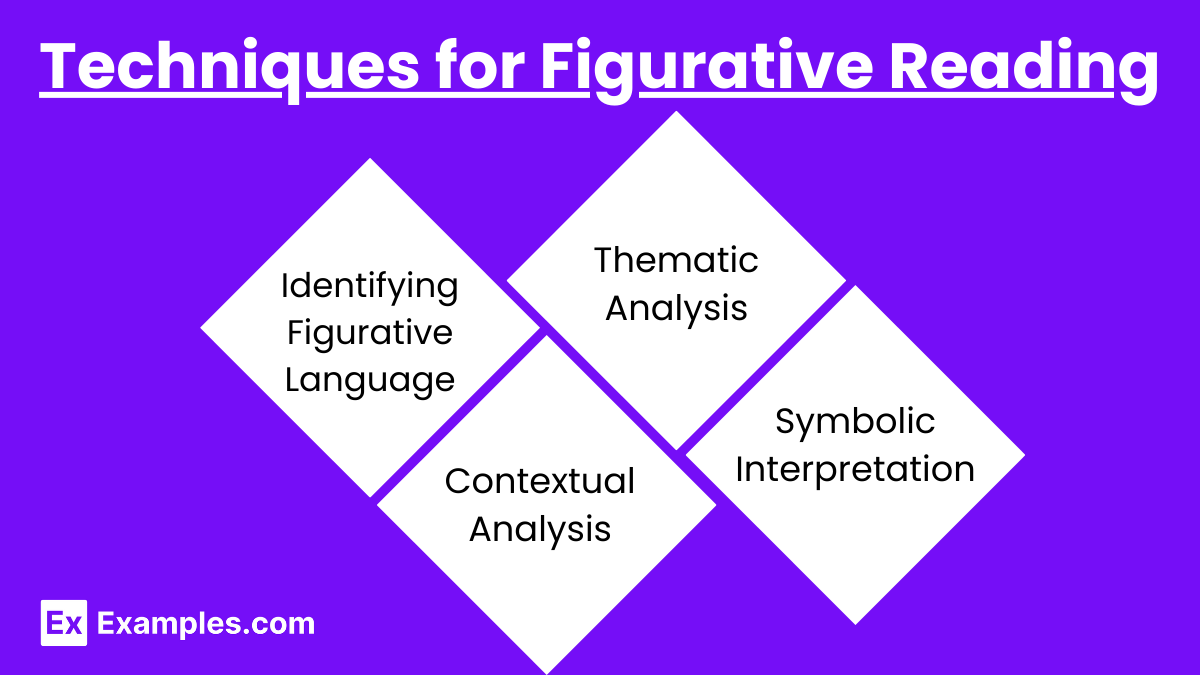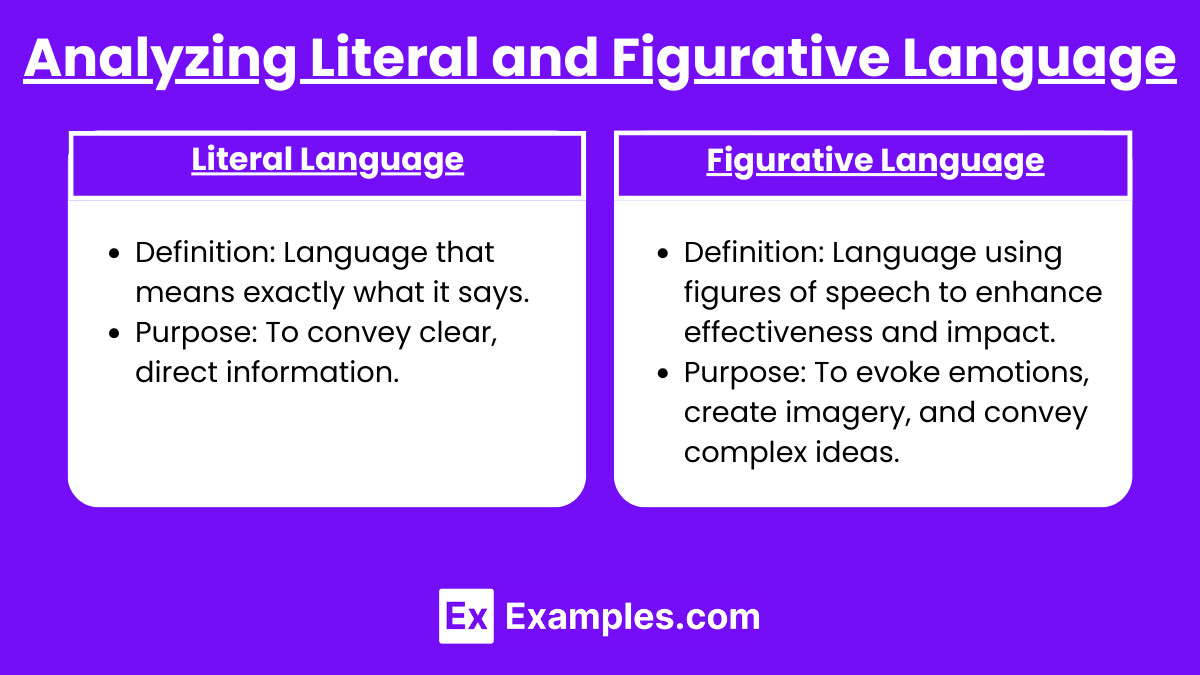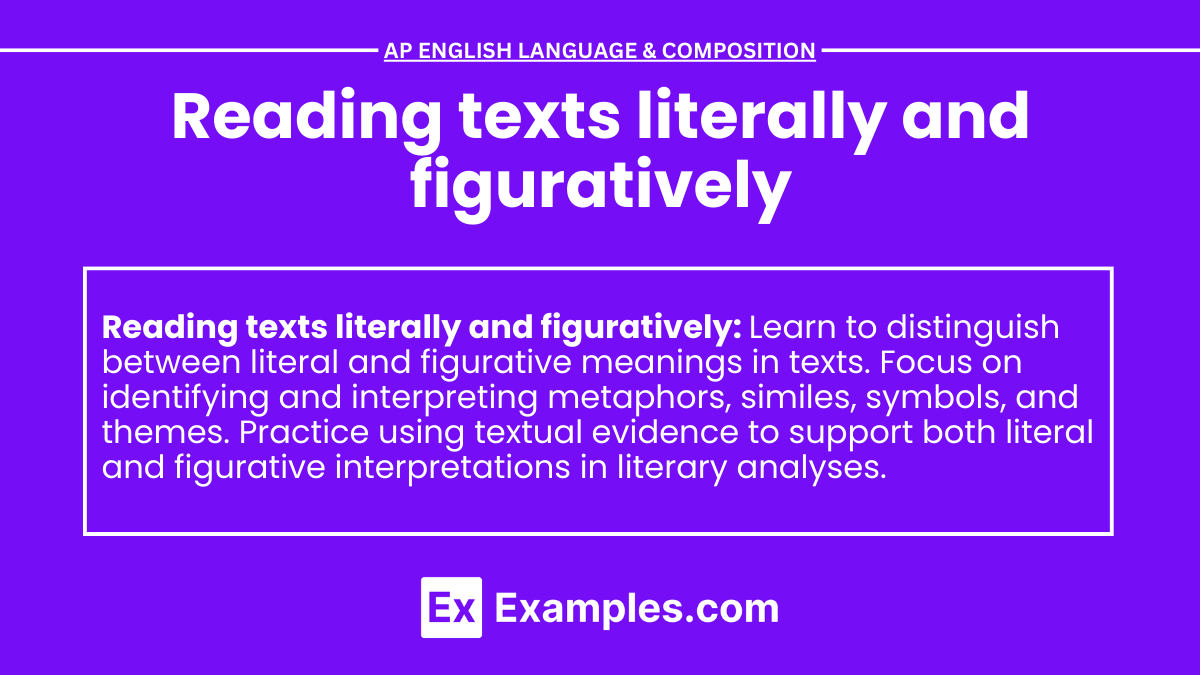In the AP English Language and Composition exam, mastering the ability to read texts both literally and figuratively is essential for crafting insightful and persuasive analyses. Whether engaged in argumentative writing or delivering an argumentative speech, understanding the explicit and deeper meanings of a text allows you to use rhetorical sentences and cumulative sentences effectively. Literal reading involves interpreting the text at face value, focusing on the explicit meaning of words and sentences. Figurative reading goes beyond the surface to uncover underlying themes, symbols, and deeper significances. By honing these skills, you can develop a nuanced and comprehensive interpretation of literary works, making your arguments more compelling and well-rounded.
Learning Objectives
By studying the topic of reading texts literally and figuratively, students will achieve several key learning objectives. They will enhance their critical thinking skills by distinguishing between explicit and implicit meanings in texts. Students will learn to use cumulative sentences and rhetorical sentences to develop thorough analyses in explanatory essays and expository essays. They will also develop the ability to craft a strong final thesis statement that effectively incorporates both literal and figurative interpretations. Mastery of these techniques will enable students to produce well-structured, engaging, and persuasive literary analyses.
Understanding Literal Reading

Definition
Literal reading is the process of interpreting the text based on the explicit meaning of the words and sentences, without looking for deeper or hidden meanings.
Techniques for Literal Reading
- Close Reading: Pay attention to the specific words and their straightforward meanings.
- Contextual Analysis: Consider the context in which the words are used to understand their literal meaning.
- Summary: Summarize the text based on what is explicitly stated.
Example
In Harper Lee’s “To Kill a Mockingbird”, a literal reading of the courtroom scenes involves understanding the events as they happen – the testimonies, the lawyer’s arguments, and the jury’s verdict.
Understanding Figurative Reading
Definition
Figurative reading involves interpreting the text to find deeper meanings, symbolism, and underlying themes that are not explicitly stated.
Techniques for Figurative Reading

- Identifying Figurative Language: Look for metaphors, similes, symbols, and other literary devices.
- Thematic Analysis: Explore the broader themes that the text addresses beyond the literal storyline.
- Contextual Analysis: Consider the historical, cultural, and social contexts to uncover deeper meanings.
- Symbolic Interpretation: Identify and interpret symbols and what they represent within the text.
Example
In “To Kill a Mockingbird”, a figurative reading of the courtroom scenes might explore themes of racial injustice, the loss of innocence, and moral courage.
Analyzing Literal and Figurative Language

Literal Language
- Definition: Language that means exactly what it says.
- Purpose: To convey clear, direct information.
- Examples: “The sky is blue,” “She walked to the store.”
Figurative Language
- Definition: Language that uses figures of speech to be more effective, persuasive, and impactful.
- Purpose: To evoke emotions, create imagery, and convey complex ideas.
- Examples:
- Metaphor: “Time is a thief.”
- Simile: “Her smile was as bright as the sun.”
- Symbolism: The mockingbird in “To Kill a Mockingbird” represents innocence.
Techniques for Effective Analysis
Close Reading
- Definition: Carefully examine the text to understand both literal and figurative meanings.
- Technique: Highlight key phrases and note their literal and possible figurative meanings.
Annotation
- Definition: Make notes on the text to track literal and figurative language.
- Technique: Write comments in the margins about the significance of specific words, phrases, and symbols.
Comparative Analysis
- Definition: Compare literal and figurative interpretations of the same text.
- Technique: Identify how the literal meaning supports the figurative meaning and vice versa.
Examples
Example 1: Literal and Figurative Reading of “The Road Not Taken” by Robert Frost
- Literal Reading: A man describes his choice between two paths in a forest.
- Figurative Reading: The paths symbolize life choices, and the poem explores themes of decision-making and individuality.
Example 2: Literal and Figurative Reading of “Moby-Dick” by Herman Melville
- Literal Reading: The story of Captain Ahab’s quest to hunt the white whale, Moby-Dick.
- Figurative Reading: The white whale symbolizes the elusive nature of truth, obsession, and the struggle between man and nature.


